Rhinoplasty in Krakow
Search and Compare the Best Clinics and Doctors at the Lowest Prices for Rhinoplasty in Krakow
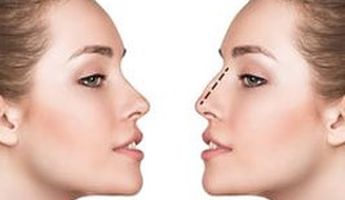
Find the best clinics for Rhinoplasty in Krakow
With Medijump you can browse 3 facilities offering Rhinoplasty procedures in Krakow. The cheapest price available is $101 in Warsaw
Rhinoplasty in Poland
Price: $ 101
Rhinoplasty in Warsaw
Price: $ 101
Rhinoplasty in Wroclaw
Price: $ 1,009
Poland offers the best prices Worldwide
Price: $ 101
Beauty Poland Krakow, located in Kazimierza Czapinskiego, Krakow, Poland offers patients Rhinoplasty procedures among its total of 29 available procedures, across 3 different specialties. The cost of a Rhinoplasty procedure starts from $4,078, whilst the national average price is approximately $2,865. All procedures and treatments are undertaken by the lead specialist at the Hospital, and they are not accredited by any recognized accreditations institutes
Medical Poland Sp. z o.o., located in Kazimierza Czapinskiego, Krakow, Poland offers patients Rhinoplasty procedures among its total of 88 available procedures, across 11 different specialties. Currently, there's no pricing information for Rhinoplasty procedures at Medical Poland Sp. z o.o., as all prices are available on request only, whilst the national average price is approximately $2,865. There is currently a lack of information available on the specialists practicing at the Hospital, and they are not accredited by any recognized accreditations institutes
ESCULAP TOURS, located in Kazimierza Czapinskiego, Krakow, Poland offers patients Rhinoplasty procedures among its total of 52 available procedures, across 4 different specialties. Currently, there's no pricing information for Rhinoplasty procedures at ESCULAP TOURS, as all prices are available on request only, whilst the national average price is approximately $2,865. There is currently a lack of information available on the specialists practicing at the Hospital, and they are not accredited by any recognized accreditations institutes
Compare Before & After Photos of _procedure_photos.phpRhinoplasty
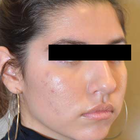

Half-side view


Front view

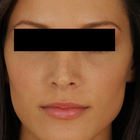
Front view
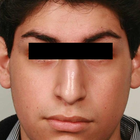
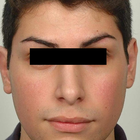
Front view
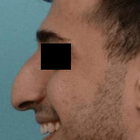

Full-side view
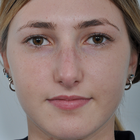
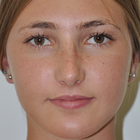
Front view

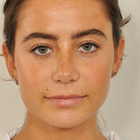
Front view

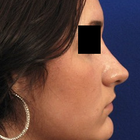
Full-side view
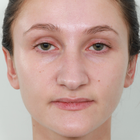
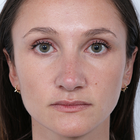
Front view
WHY US?
At Medijump, we're making medical easy. You can search, compare, discuss, and book your medical all in one place. We open the door to the best medical providers worldwide, saving you time and energy along the way, and it's all for FREE, no hidden fees, and no price markups guaranteed. So what are you waiting for?

Free

Best Price

Widest Selection

Risk-Free
What you need to know about Rhinoplasty in Krakow

Rhinoplasty, commonly known as the “nose job,” is plastic surgery to change the shape of the nose and to improve its function. This procedure can be performed for medical and cosmetic reasons. Those with breathing problems caused by a birth defect, deviated septum, sinusitis, or an injury to the nose, as well as those who are not happy with the appearance of their nose, can undergo rhinoplasty.
Rhinoplasty has a number of benefits. However, the most compelling reason for patients to have this surgery is to improve the appearance of their noses, which can boost their self-esteem significantly. Besides altering the form and size of your nose, the procedure can also strengthen the bridge, narrow the nostrils, and reshape the tip.
While anyone can undergo rhinoplasty, teenagers are advised to wait until their nose has reached its adult size.
What does a Rhinoplasty Procedure Involve?
During rhinoplasty, you will be given local or general anesthesia to make sure that you are comfortable and you don't feel any pain. Your surgeon might perform the procedure inside your nose or through an incision at the base of your nose.
Changing the shape of your nasal bones or cartilage can be done in several ways, depending on how much needs to be added or removed, available materials, and your nose’s structure.
If your nose needs to be augmented because you want to increase its size, prosthetic implants or cartilage from your nasal septum or ear is used. Once your surgeon is done altering the shape of your nose and correcting any defect, they will place the nose’s skin and tissue back, then close the incisions with stitches.
How Long Should I Stay in Krakow for a Rhinoplasty Procedure?
Depending on the complexity of the procedure and the type of anesthesia used, you may be able to leave the hospital on the same day or stay in the hospital for a day or two. The surgery itself takes around 1.5 to 3 hours to complete. Once you are discharged from the hospital, you should not leave Krakow right away. Instead, plan to stay about 10 to 14 days for initial recovery and follow-up checkups. A week following the surgery, your surgeon will remove your stitches.
What's the Recovery Time for Rhinoplasty Procedures in Krakow?
You generally need to wait at least 2 to 3 weeks until you can resume most of your normal activities. However, you should not perform any strenuous activities, such as intense exercise, for about 3 to 6 weeks. During the first few days after the surgery, you will experience some swelling around your eyes, but these will subside within 3 to 14 days. You will also have to wear a nasal splint for about a week following the surgery.
What sort of Aftercare is Required for Rhinoplasty Procedures in Krakow?
Since you may experience some discomfort, your surgeon will give you painkillers to ease any pain and discomfort. Make sure to take the pain medication as prescribed. For a couple of weeks following the surgery, you should not blow your nose, as well as laughing or talking too much. You also need to avoid any clothes that need to be pulled over your head and glasses on your nose for a few weeks. Always make sure to cover your nose while going out in the sun during your recovery period.
It's important that you avoid bumping or hitting your nose, and keep your nose safe and protected from anything that could misalign the bones and undo the results. To help you recover smoothly and quickly, eat healthy and nutritious food.
What's the Success Rate of Rhinoplasty Procedures in Krakow?
Rhinoplasty is considered one of the most complicated facial cosmetic surgeries. However, thanks to the advances in technology and surgeons’ extensive experience, the procedure has a very high success rate of between 85% and 90%.
Although rhinoplasty is generally safe, it does carry some potential risks of complications and side effects, including bleeding, infection, allergic reaction to the anesthesia, permanent numbness in your nose, difficulty breathing through the nose, an uneven-looking nose, discoloration, persisting pain, scarring, septal perforation, and a need for additional surgery.
Are there Alternatives to Rhinoplasty Procedures in Krakow?
If you are unable to undergo rhinoplasty, you can opt for its minimally invasive or noninvasive alternatives, such as filler injections or Botox. Both filler injections and Botox are noninvasive and require only a very short visit with your doctor. It works by injecting the substance into your nose to change its shape. Many people choose these methods because it is not as painful as rhinoplasty, requires little to no downtime, and no incision or stitches are involved.
If you want to improve your breathing, you may be recommended to use nasal strips. The nasal strip is a type of bandage with adhesive-embedded splints or plastic ribs that is applied across the bridge of the nose and the sides of the nostrils. It can keep the airway open, making breathing easier.
Whilst the information presented here has been accurately sourced and verified by a medical professional for its accuracy, it is still advised to consult with your doctor before pursuing a medical treatment at one of the listed medical providers
No Time?
Tell us what you're looking for and we'll reachout to the top clinics all at once
Enquire Now

Popular Procedures in Krakow
Prices Start From $404

Prices Start From $1,945

Prices Start From $192

Prices Start From $500

Recommended Medical Centers in Krakow for Rhinoplasty

- Interpreter services
- Translation service
- Religious facilities
- Medical records transfer
- Medical travel insurance
- Health insurance coordination
- TV in the room
- Safe in the room
- Phone in the room
- Private rooms for patients available

- Interpreter services
- Translation service
- Religious facilities
- Medical records transfer
- Medical travel insurance
- Health insurance coordination
- TV in the room
- Safe in the room
- Phone in the room
- Private rooms for patients available

- Interpreter services
- Translation service
- Religious facilities
- Medical records transfer
- Medical travel insurance
- Health insurance coordination
- TV in the room
- Safe in the room
- Phone in the room
- Private rooms for patients available

- Interpreter services
- Translation service
- Religious facilities
- Medical records transfer
- Medical travel insurance
- Health insurance coordination
- TV in the room
- Safe in the room
- Phone in the room
- Private rooms for patients available

- Interpreter services
- Translation service
- Religious facilities
- Medical records transfer
- Medical travel insurance
- Health insurance coordination
- TV in the room
- Safe in the room
- Phone in the room
- Private rooms for patients available

- Interpreter services
- Translation service
- Religious facilities
- Medical records transfer
- Medical travel insurance
- Health insurance coordination
- TV in the room
- Safe in the room
- Phone in the room
- Private rooms for patients available

- Interpreter services
- Translation service
- Religious facilities
- Medical records transfer
- Medical travel insurance
- Health insurance coordination
- TV in the room
- Safe in the room
- Phone in the room
- Private rooms for patients available

- Interpreter services
- Translation service
- Religious facilities
- Medical records transfer
- Medical travel insurance
- Health insurance coordination
- TV in the room
- Safe in the room
- Phone in the room
- Private rooms for patients available
Rhinoplasty in and around Krakow
About Kraków
Kraków is the second-largest and also one of the oldest cities in Poland. It was the official capital of the country until 1596 and has been one of the leading centers of Polish economic, academic, cultural, and artistic life. Named as one of the most beautiful cities in Europe, Kraków is brimming with stunning architecture, enthralling history, and riveting culture. Today, the city is at the forefront of Europe’s medical tourism. The most sought-after treatments are dentistry and cosmetic surgery. International medical tourists, particularly from neighboring countries, come to this city for its affordable procedures, fully organized healthcare system, and skilled specialists.
Popular Parts of Kraków
Kraków is full of charm; from its cobbled streets and beautiful squares to stunning churches and a castle. The most popular part of the city is the Old Town, which was declared a UNESCO World Heritage Site. Visitors who come to the Old Town can admire the Wawel Royal Castle, which is an architectural wonder in a medieval, renaissance, and baroque style. This castle is now a museum containing five separate sections. Another popular part of the Old town is the Main Market Square, which is the biggest medieval town square in Europe with a 15th century Town Hall Tower, a 16th-century Cloth Hall at the center, and a bronze statue of Polish 19th-century poet Adam Mickiewicz. Other popular parts of the city are Schindler’s Factory, the Underground Museum, and Auschwitz.
Transport in Kraków
Kraków John Paul II International Airport is where most international tourists will arrive. It serves flights to numerous cities around Europe and the Middle East. The most affordable way to get around the city is by public buses and trams. Taxis are reasonably priced and comfortable, but make sure to use official taxis that use a meter as there are illegal taxis that will try to overcharge you. Uber is available and it is the cheapest option if you don’t want to take public transit. Bicycles are also popular in the city and bike rentals are widely available.
Visas in Kraków
Poland is a part of the Schengen area. Therefore, citizens of 62 countries, including the US, Canada, Japan, and Australia, can stay in Kraków for up to 90 days without a visa. EU citizens do not need a visa and can stay indefinitely. Citizens of other countries need to obtain a visa prior to arrival. Make sure you have a passport that is valid for at least 6 months.
Weather in Kraków
Summer, from June to August, is generally warm with an average temperature of about 25°C. The spring (April – May) and autumn (September – October) have great weather with milder temperatures. Note that spring is usually a bit rainier than other seasons. Winter can get pretty cold, with the temperatures dropping below 0.
Additional Info
- Local Currency: The official currency is the Polish Zlotych (PLN). 1 USD is equivalent to approx. 3.8 PLN.
- Money & Payments: ATMs are easy to find in Kraków. Credit cards are accepted in most establishments. Tipping is optional and not mandatory.
- Local Language: Polish is the native language and English is widely spoken by younger people.
- Local Culture and Religion: Most of the population adheres to Christianity. However, other religions, such as Judaism, are also present.
- Public Holidays: Kraków celebrates various public holidays, including the New Year’s Day, Three King’s Day, Easter, Constitution Day, Corpus Christi, All Saints’ Day, Independence Day, and Christmas Day.
Popular Searches
- Plastic Surgery in Thailand
- Dental Implants in Thailand
- Hair Transplant in Thailand
- Breast Augmentation Thailand
- Gastric Sleeve in Thailand
- Gender Reassignment Surgery in Thailand
- Laser Hair Removal in Bangkok
- Botox in Bangkok
- Dermatology in Bangkok
- Breast Augmentation in Bangkok
- Coolsculpting in Bangkok
- Veneers in Turkey
- Hair Transplant in Turkey
- Rhinoplasty in Turkey
- Stem Cell Therapy in Mexico
- Rhinoplasty in Mexico
- Liposuction in Mexico
- Coolsculpting in Tijuana
- Rhinoplasty in Korea
- Scar Removal in Korea
- Gastric Sleeve in Turkey
- Bone Marrow Transplant in India
- Invisalign in Malaysia
- Plastic Surgery in the Dominican Republic
- Tummy Tuck in the Dominican Republic
- Plastic and Cosmetic Surgery in Poland
- Rhinoplasty in Poland
- Hair Implant in Poland
- Dental Implants in Poland
- IVF in Turkey
